Introduction
The Register of foreign ownership of residential land has been established to increase transparency around foreign investment in Australia.
Information has been extracted from the Register to provide insights into foreign purchases and sales of residential real estate over four reporting periods. The information relates to residential real estate transactions (purchases or sales) by foreign persons over the periods 1 July 2020 to 30 June 2021 (2020‑21), 1 July 2019 to 30 June 2020 (2019‑20), 1 July 2018 to 30 June 2019 (2018‑19), and 1 July 2017 to 30 June 2018 (2017‑18).
Consistent with Australia’s broader foreign investment review framework, the details of foreign persons are not made available publicly. Taxation law also restricts the release of information which could identify, or be used to identify, an individual or entity. For these reasons, this information is presented in an aggregated format only.
Care should be taken in comparing the Insights data with the Foreign Investment Review Board (FIRB) Annual Reports. The FIRB Annual Reports contain proposed investment information. The Insights data reflects confirmed real estate transactions and is not a full stocktake of foreign ownership in residential land.
Methodology
The Register holds information about purchase or sale transactions by foreign persons who obtained foreign investment approval. Purchase transactions are where:
- a foreign person through self‑registration has indicated that they have settled on a residential property for which they had gained prior foreign investment approval, and a foreign person identified during compliance activity that has settled property and failed to apply for foreign investment approval, or
- through the collection of land titles data from participating states and territories, the ATO has matched a residential real estate transfer (purchase) and purchaser to a corresponding property and foreign person that was previously issued foreign investment approval.
Similarly, sale transactions are where:
- a foreign person through self‑registration has indicated that they are no longer a foreign person, have sold (and settlement has occurred on) a residential property for which they had gained prior foreign investment approval, or
- through the collection of land titles data from participating states and territories, the ATO has matched a residential real estate transfer (sale) and vendor to a corresponding property and foreign person that was previously issued foreign investment approval.
For a purchase or sale transaction to be included in the Insights, the settlement date for the transaction needs to have occurred within the relevant reporting period. For purchase transactions, if a property was purchased and then sold during the report period, the purchase is included in these figures.
The value is derived from the contract sale price and represents the transaction value at that time, not current market value. The dwelling type – vacant land, new dwelling or established dwelling – reflects the type of dwelling at the time of purchase.
Understanding the reporting period
| Transactions | |
|---|---|
| Transaction starts before but settles within the reporting period | Included |
| Transaction starts within the reporting period but settles after | Not included |
| Foreign person becomes a permanent resident before reporting period | Not included |
| Foreign person becomes a permanent resident within the reporting period | Included |
2020‑21 Insights
Purchases
From 1 July 2020 to 30 June 2021, 5,310 residential real estate purchase transactions had a level of foreign ownership, with a total value of $4.2 billion.
Sales
The total number of residential real estate sale transactions by foreign persons during the 2020‑21 period was 3,103, with a total value of $2.7 billion.
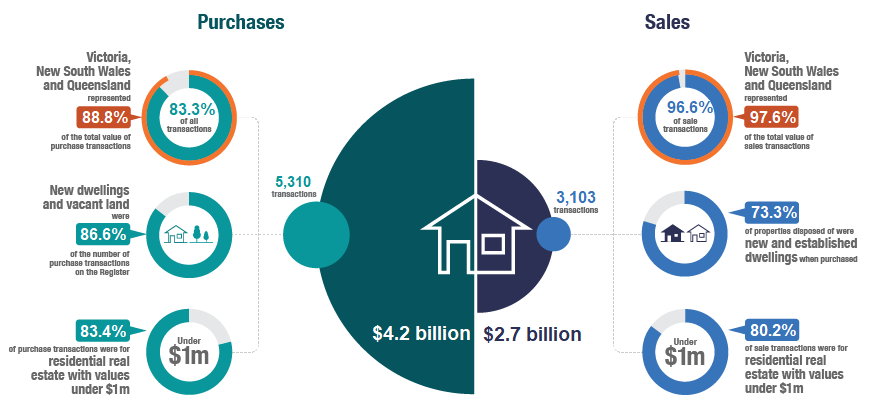
During 2020‑21 only 66.0 per cent of purchases occured within 3 years of gaining foreign investment approval. This reflects the high proportion of new dwelling and vacant land property types, that can often involve long settlement periods.
The insights show the total sale transactions during the report period (regardless of when a person initially acquired the property).
Purchase transactions in 2020‑21
Victoria, New South Wales and Queensland represented 83.3 per cent of all purchase transactions and make up 88.8 per cent of the total value of purchase transactions recorded on the Register for the 2020‑21 period.
- The concentration and value of transactions in Victoria, New South Wales and Queensland fell slightly in 2020‑21 from 88.0% of all purchase transactions and 92.1 per cent of the total value.
- New dwellings represented 68.6 per cent of purchase transactions, followed by 18.0 per cent for vacant land and 13.4 per cent for established dwellings in 2020‑21. In comparison, in 2019‑20, new dwellings represented 67.8 per cent of purchase transactions, followed by 17.8 per cent for vacant land and 14.4 per cent for established dwellings.
- Across Australia, purchase transactions fell by 29.0 per cent. The state with the greatest number of purchase transactions for all property types in 2020‑21 was Victoria, the same result as in 2019‑20. New South Wales had the largest decrease in property purchases with a fall of 50.1 per cent.
- Residential properties with values under 1 million dollars formed the majority of residential property purchase transactions, accounting for 83.4 per cent of property transactions 2020‑21. This compares to 79.0 per cent in 2019‑20.
- Of the 5,310 purchase transactions in 2020‑21, 111 registrants became a permanent resident or gained Australian citizenship during the year and are included in these statistics.
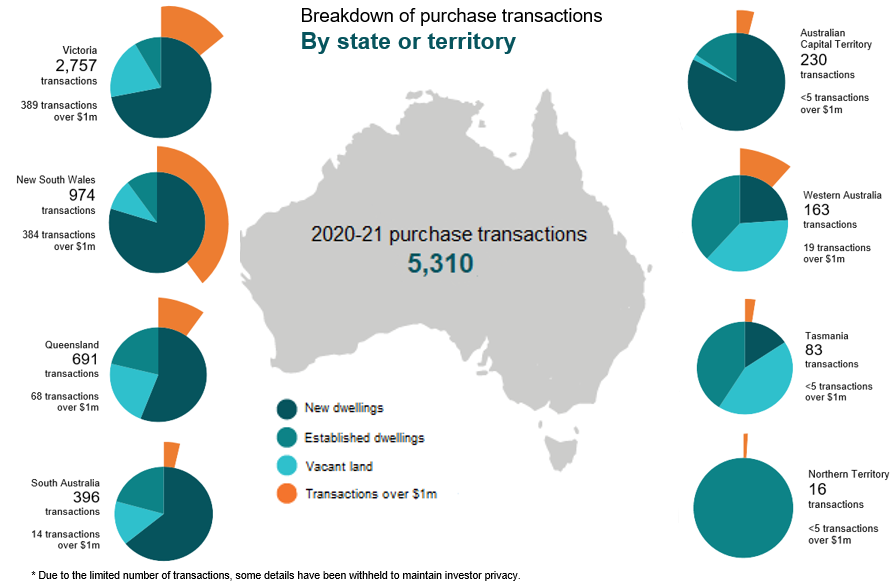
Breakdown of 2020‑21 purchase transactions by property type
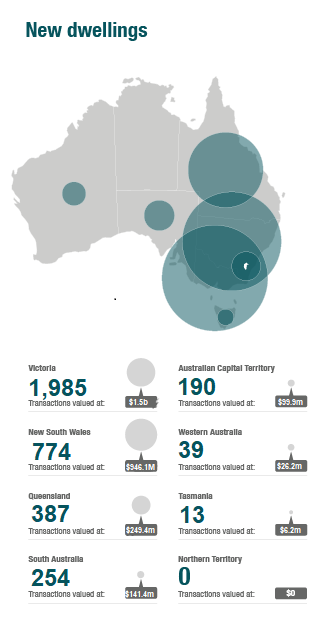
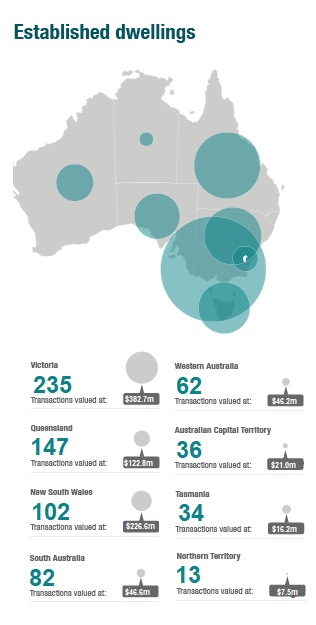
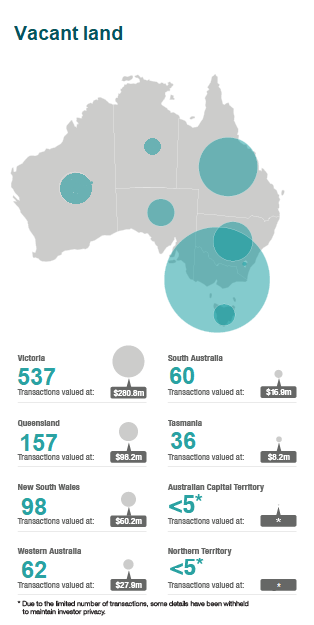
Sale transactions in 2020‑21
Victoria, New South Wales and Queensland represent 96.6 per cent of all sale transactions, making up 97.6 per cent of the value of sale transactions for the reporting period.
- In comparison, in 2019‑20 Victoria, New South Wales and Queensland represented 97.3 per cent of all sale transactions and 98.0 per cent of the value.
- In 2020‑21, new dwellings represented 45.6 per cent of sale transactions, followed by 27.7 per cent for established dwellings and 26.7 per cent for vacant land. The property type reflects the type of property at time of purchase, e.g. new dwellings were new at the time of purchase.
- Victoria had the greatest number of sale transactions across all property types in both 2020‑21 and 2019‑20.
- Properties with values under 1 million dollars represented 80.2 per cent of sale transactions. This is a slight decrease when compared to the proportion of sale transactions in 2019‑20 of 85.3 per cent.
- Sale transactions numbers reflect any sale transactions settled by foreign persons within the reporting period, regardless of when the initial purchase was contracted.
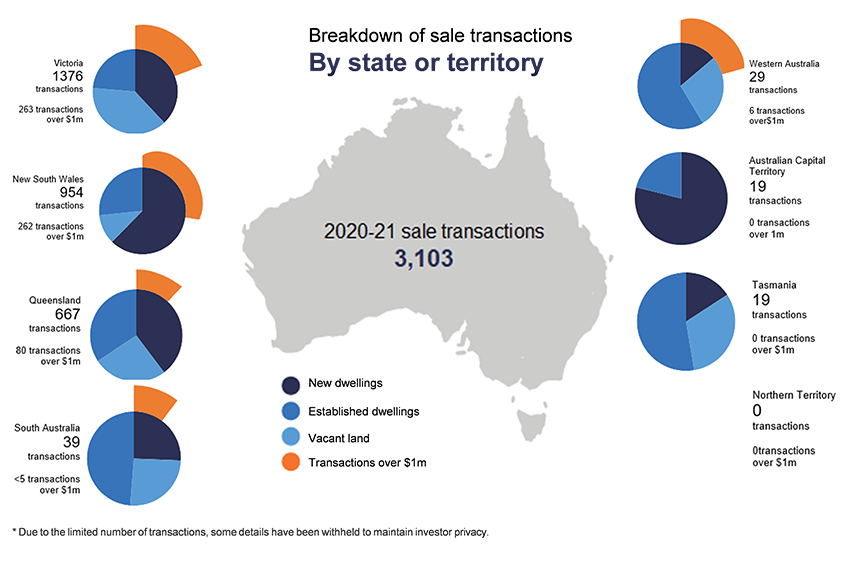
Breakdown of 2020‑21 sale transactions by property type
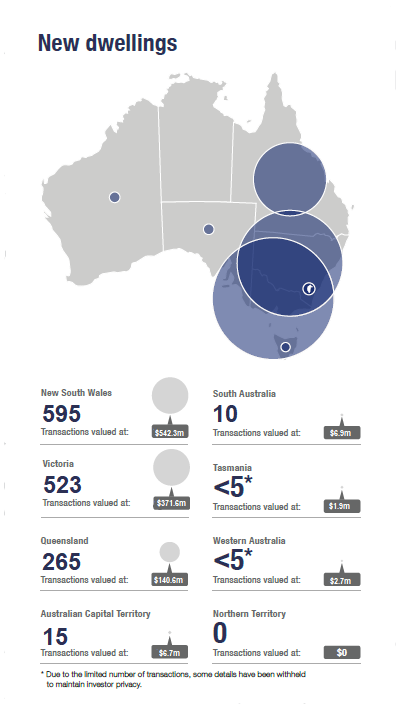
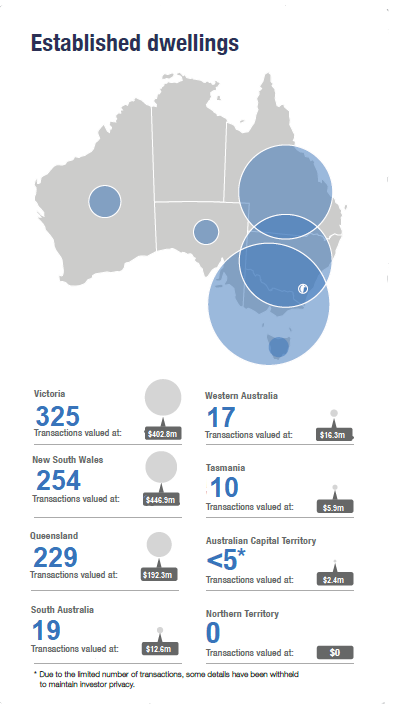
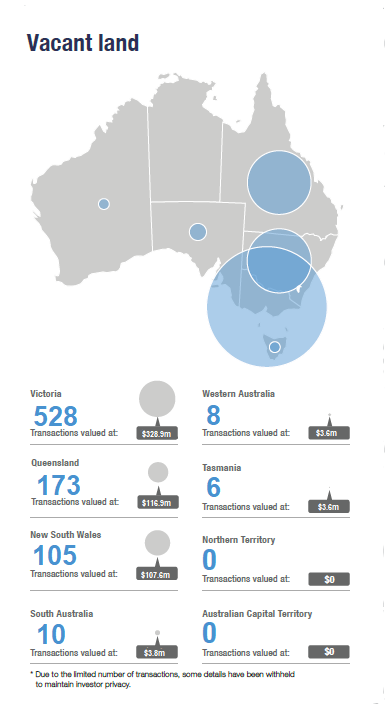
Four‑year comparison of purchase transactions
Purchase transactions have declined over the four years from 2017‑18 to 2020‑21. There was a 29.0 per cent reduction in the number of purchase transactions in 2020‑21 when compared to 2019‑20. The value of transactions also reduced by 30.0 per cent in 2020‑21 when compared to 2019‑20.
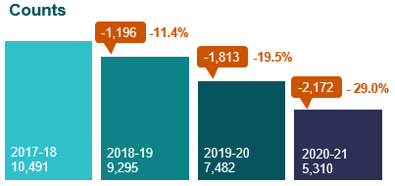
Purchase transactions by state or territory
The ACT, NT and SA show an increase in purchase counts in 2020‑21 when compared to 2019‑20. The remaining states show an overall reduction.
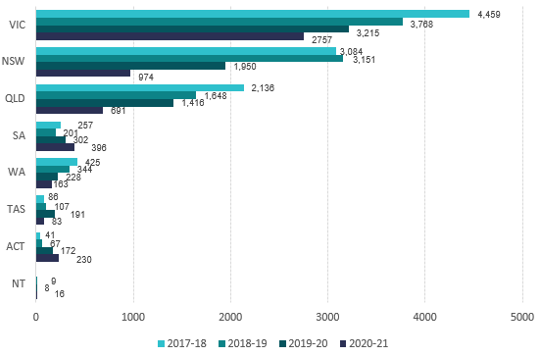
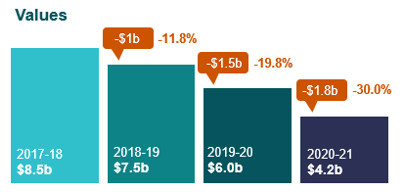
Purchase transactions with values under $1 million
The percentage of purchase transactions for residential real estate with values under $1m has been stable over the four years 2017‑18 to 2020‑21.
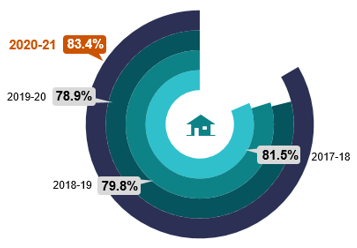
Comparing the percentage change in 2020‑21 purchase transactions by property type to 2019‑20, established dwellings had the greatest reduction of 34.2 per cent. New dwellings and vacant land have both reduced by 28.2 per cent.
The majority of foreign purchases on the register were new dwellings and vacant land.
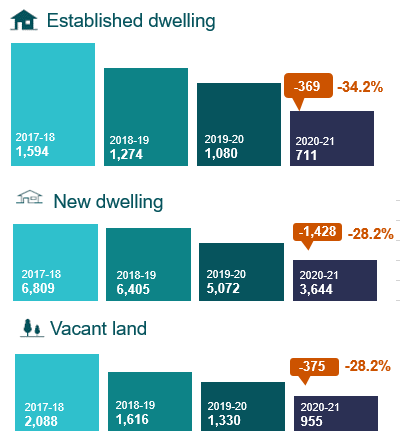
Purchase transaction trends by state or territory in the four years 2017‑18, 2018‑19, 2019‑20 and 2020‑21 show New South Wales and Victoria had greatest number in each property type.
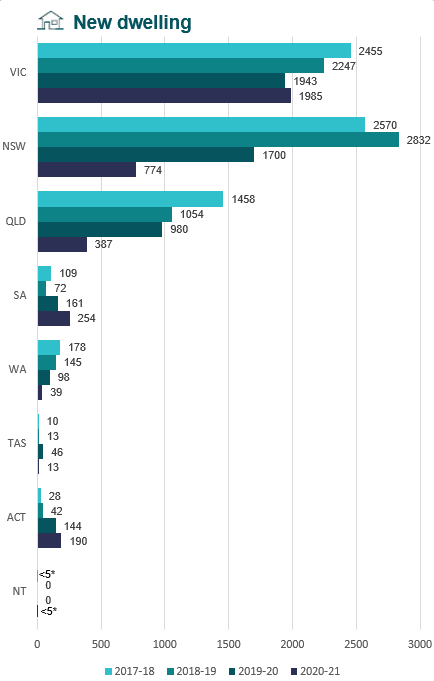
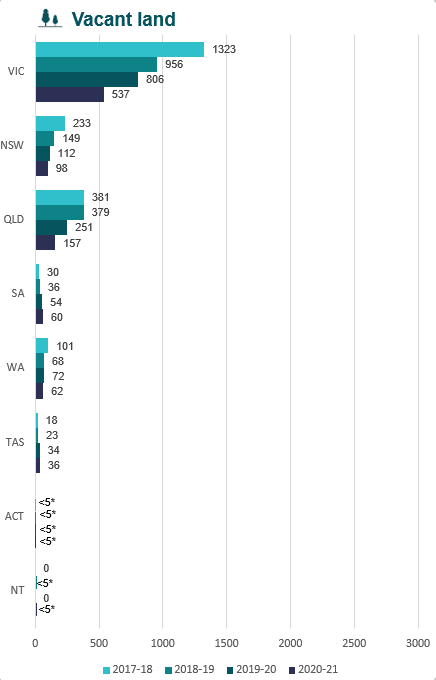
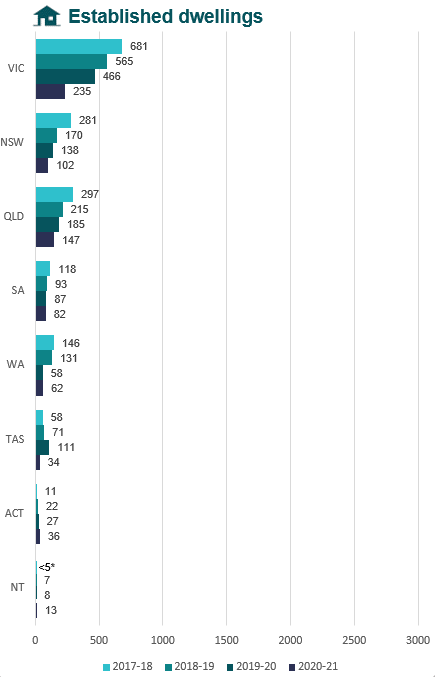
*Due to the limited number of transactions, some details have been withheld to maintain investor privacy.
Four‑year comparison of sale transactions
Sale transactions have increased in 2020‑21 when compared to 2017‑18, 2018‑19 and 2019‑20.
There was a 58.6 per cent increase in sale transactions in 2020‑21 when compared to 2019‑20. The value of sale transactions also increased by 83.9 per cent when compared to 2019‑20.
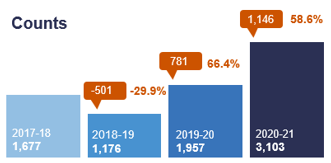
Sale transactions by state or territory
There was an increase in sales counts when compared to 2019‑20 in all states and the Australian Capital Territory.
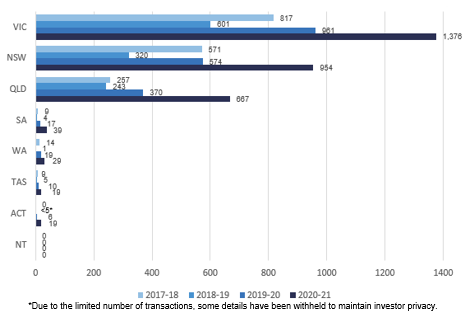
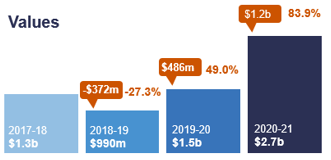
Sales transactions with values under $1 million
The percentage of sales transactions for residential real estate with values under $1m has decreased from 85.3% in 2019‑20 to 80.2% in 2020‑21
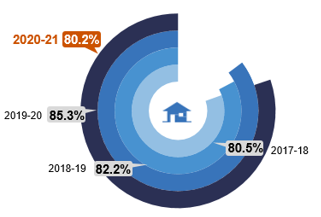
Comparing the percentage change in 2020‑21 sales transactions by property type to 2019‑20, vacant land had the greatest increase of 109.6 per cent. Established dwellings increased by 96.34 per cent and new dwellings by 25.89 per cent.
The majority of foreign sales on the register were new dwellings.
Of the 830 Vacant land sales over 83% were sold with at least one new dwelling erected.
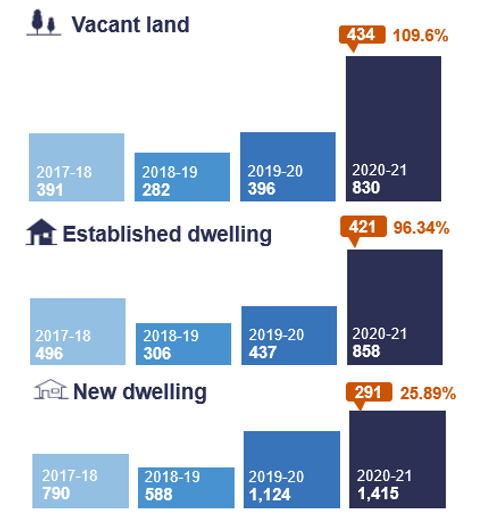
Sale transaction trends by state or territory in the four years 2017‑18, 2018‑19, 2019‑20 and 2020‑2021 show New South Wales and Victoria had the greatest number in each property type.
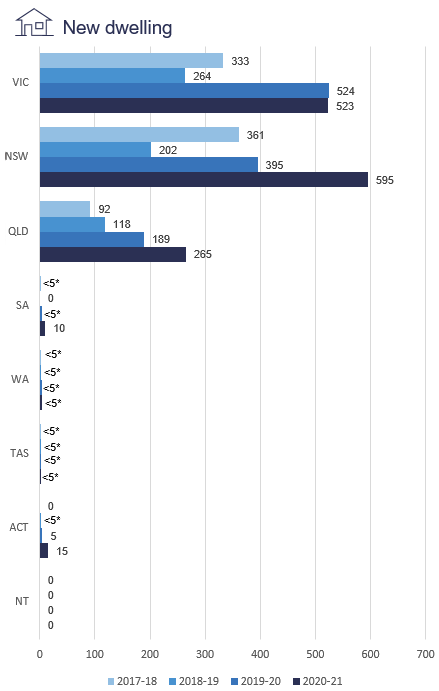
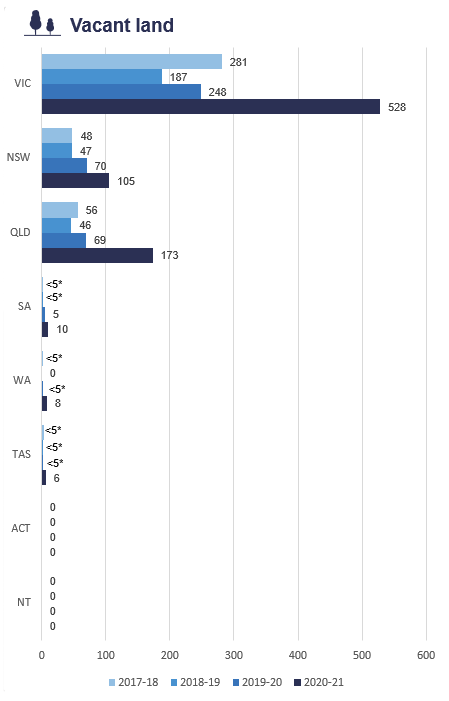
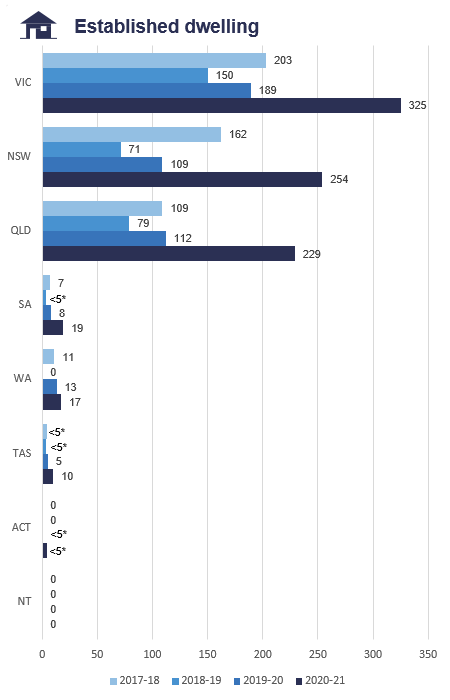
*Due to the limited number of transactions, some details have been withheld to maintain investor privacy.
